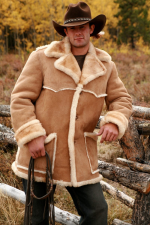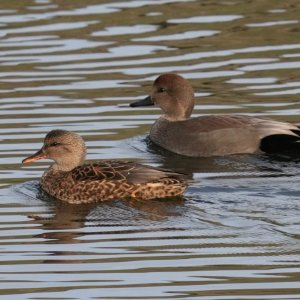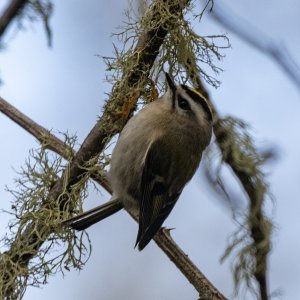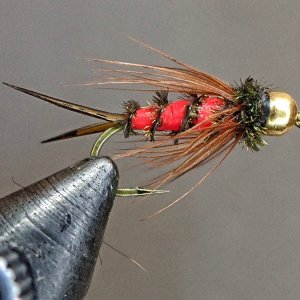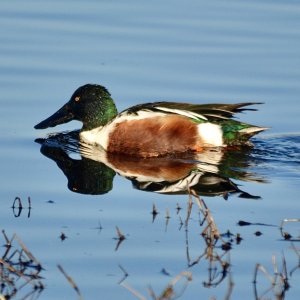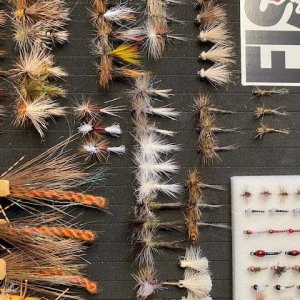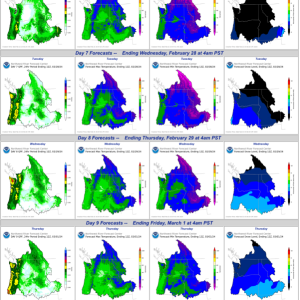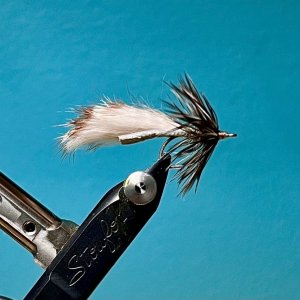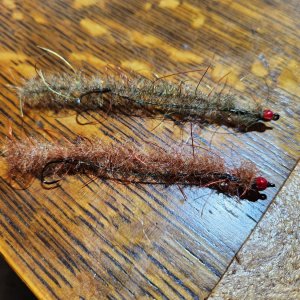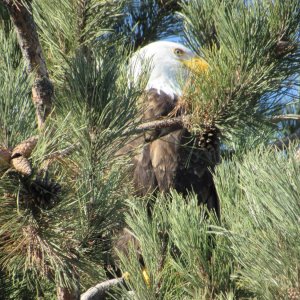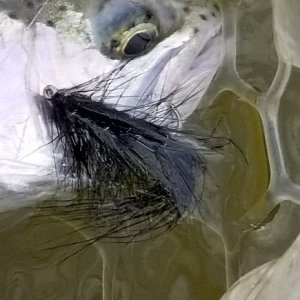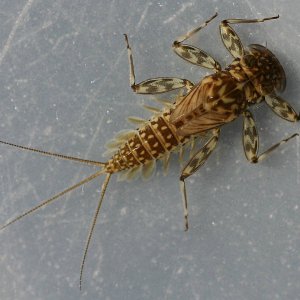You are using an out of date browser. It may not display this or other websites correctly.
You should upgrade or use an alternative browser.
You should upgrade or use an alternative browser.
HB 6294.....attempting to ban fur sales
- Thread starter Millsfly
- Start date
Asked in jest, but answered my own question by reading the proposed legislation. Shearling is fur, but shearling products are specifically exempted from the ban:Is shearling fur?
(1) "Fur" means any animal skin or part thereof with hair, fleece, or fur fibers attached, either in its raw or processed state.
(2)(a) "Fur product" means any article of clothing or covering for any part of the body, or any fashion accessory including, but not limited to, handbags, shoes, slippers, hats, earmuffs, scarves, shawls, gloves, jewelry, keychains, toys or trinkets, and home accessories and decor, that is made in whole or in part of fur.
(b) "Fur product" does not include any of the following:
(i) An animal skin or part thereof that is to be converted into leather, which in processing will have the hair, fleece, or fur fiber completely removed;
(ii) Cowhide, deerskin, goatskin, or sheepskin with hair attached thereto; or
(iii) The pelt or skin of an animal that is preserved through taxidermy or for the purpose of taxidermy.
I guess sheep just aren't cute enough, or something. BTW, nothing in the "fur product" definition would include swatches of fur used for fly tying.
Last edited:
Odd. A quick glance at a few fly shops in Redding, San Fran, San Diego shows them selling both fur patches and flies tied with fur stripsthis is about the hide/skin element. I got word that the bill sponsor wants to add a provision to exclude the fibers/hair.....but darn nearn all our "fibers" are attached to the hide.
So for instance, California passed a law recently like this and one of my friends who owns a pretty significant fly tying distribution company said..."we cant send rabbit, hide on, anymore to Cali."
Old stock, or maybe your friend is overly cautious?
I thought you did a good job and carried Jake Gyllenhaal through most of that movie.View attachment 100849
I think I* look absolutely dashing in my fur, oops, shearling jacket
Ask Dave McNeese how it turns out when you run a foul of the government in trading in animal fur.The definition of fur product seems quite poor. I think one could at least claim that fly tying patches are "toys or trinkets" or "home accessories". I'm not sure I would agree with that, but what I think doesn't really matter. If I am a supplier do I want to be the test case on that definition when the potential penalty is $1000 per sale? Or is it just better business to stop selling to WA?
Westfly Refugee
Steelhead
Ask Dave McNeese how it turns out when you run a foul of the government in trading in animal fur.
This will-not-pass proposed WA State legislation is not comparable to the Federal and International Treaty laws that Mr. McNeese willfully violated.
In this state? Don’t become complacent with the extreme positions of the reps in this state. Hell Hillary Franz comes to mind. Would be nice to see some centrists in office.Just because some yahoo has entered this bill doesn't mean that it will be taken up by the legislature, and also doesn't mean that it represents the will of the people.
Last edited:
McNeese was setup. It may not pass this time, but they'll keep trying. Hunting, fishing, and now fly tying is threatened.This will-not-pass proposed WA State legislation is not comparable to the Federal and International Treaty laws that Mr. McNeese willfully violated.
Millsfly
Steelhead
The California bill centered around rabbit. Thus, his hesitency to send skin on rabbit, zonkers, etc.Odd. A quick glance at a few fly shops in Redding, San Fran, San Diego shows them selling both fur patches and flies tied with fur strips
Old stock, or maybe your friend is overly cautious?
In this state? Don’t come complacent with the extreme positions of the reps in this state. Hell Hillary Franz comes to mind. Would be nice to see some centrists in office.
If we attach a tax to the fur or somehow implicate it in climate change it will pass. Washington puts that shit on everything.
Stockpile your Merkins. They are coming for them.
Brilliant!If we attach a tax to the fur or somehow implicate it in climate change it will pass. Washington puts that shit on everything.
Flymph
Steelhead
There is always another side to the story which takes only a few minutes of research!Fur production has always involved cruelty to animals, not to mention environmentally harmful processes. Eighty-five percent of the fur industry’s skins come from animals living captive on fur factory farms that can hold thousands of animals. Like other factory farms, they’re designed to maximize profits—with virtually no regard for the environment or animals’ well-being.
Each mink skinned by fur farmers produces about 44 pounds of feces during his or her lifetime. That adds up to 1 million pounds of feces produced annually by U.S. mink farms alone. One dangerous component of all this waste is the nearly 1,000 tons of phosphorus, which wreaks havoc on rivers and streams. Fur’s continued presence in the “luxury” market simply doesn’t mesh with the current emphasis on social and ecological awareness.
The number of animals who suffer in the skins industry annually is appalling, and the conditions in which they’re kept are even worse. Animals on fur farms spend their entire lives pacing the tiny floor of a wire cage. Many go insane from the extreme deprivation.
Corporate Greed at its very best!
There is always another side to the story which takes only a few minutes of research!
Fur production has always involved cruelty to animals, not to mention environmentally harmful processes. Eighty-five percent of the fur industry’s skins come from animals living captive on fur factory farms that can hold thousands of animals. Like other factory farms, they’re designed to maximize profits—with virtually no regard for the environment or animals’ well-being.
Each mink skinned by fur farmers produces about 44 pounds of feces during his or her lifetime. That adds up to 1 million pounds of feces produced annually by U.S. mink farms alone. One dangerous component of all this waste is the nearly 1,000 tons of phosphorus, which wreaks havoc on rivers and streams. Fur’s continued presence in the “luxury” market simply doesn’t mesh with the current emphasis on social and ecological awareness.
The number of animals who suffer in the skins industry annually is appalling, and the conditions in which they’re kept are even worse. Animals on fur farms spend their entire lives pacing the tiny floor of a wire cage. Many go insane from the extreme deprivation.
Corporate Greed at its very best!
The same goes for food. Bottom line is with so many people out of touch with where food and other products originate from you are going to have cruel conditions.
Yet it's ironically regulators in bed with the largest lobby rich factory oriented farming and ranching practices. There's acceptable levels of shit in your meat if you are buying it from the magic store where it grows in plastic packaging.
Yet sportsmen are being harassed with further restrictions on hunting. Small farm operations are made harder due to regulation, taxes, and a myriad of other hoops should they sell even one steak to a neighbour.
The whole thing stinks, literally. The biggest players have the least rules and can afford to break them. While little farms and family ranches are getting crushed. Every pelt, steak, burger, or bowl of jello had a life attached to it. The big guys don't care and would like it if you never realised that. But don't worry. We will regulate our way out of this cruelty. The government is here to help.
Millsfly
Steelhead
so do you hunt or fish?
There is always another side to the story which takes only a few minutes of research!
Fur production has always involved cruelty to animals, not to mention environmentally harmful processes. Eighty-five percent of the fur industry’s skins come from animals living captive on fur factory farms that can hold thousands of animals. Like other factory farms, they’re designed to maximize profits—with virtually no regard for the environment or animals’ well-being.
Each mink skinned by fur farmers produces about 44 pounds of feces during his or her lifetime. That adds up to 1 million pounds of feces produced annually by U.S. mink farms alone. One dangerous component of all this waste is the nearly 1,000 tons of phosphorus, which wreaks havoc on rivers and streams. Fur’s continued presence in the “luxury” market simply doesn’t mesh with the current emphasis on social and ecological awareness.
The number of animals who suffer in the skins industry annually is appalling, and the conditions in which they’re kept are even worse. Animals on fur farms spend their entire lives pacing the tiny floor of a wire cage. Many go insane from the extreme deprivation.
Corporate Greed at its very best!

